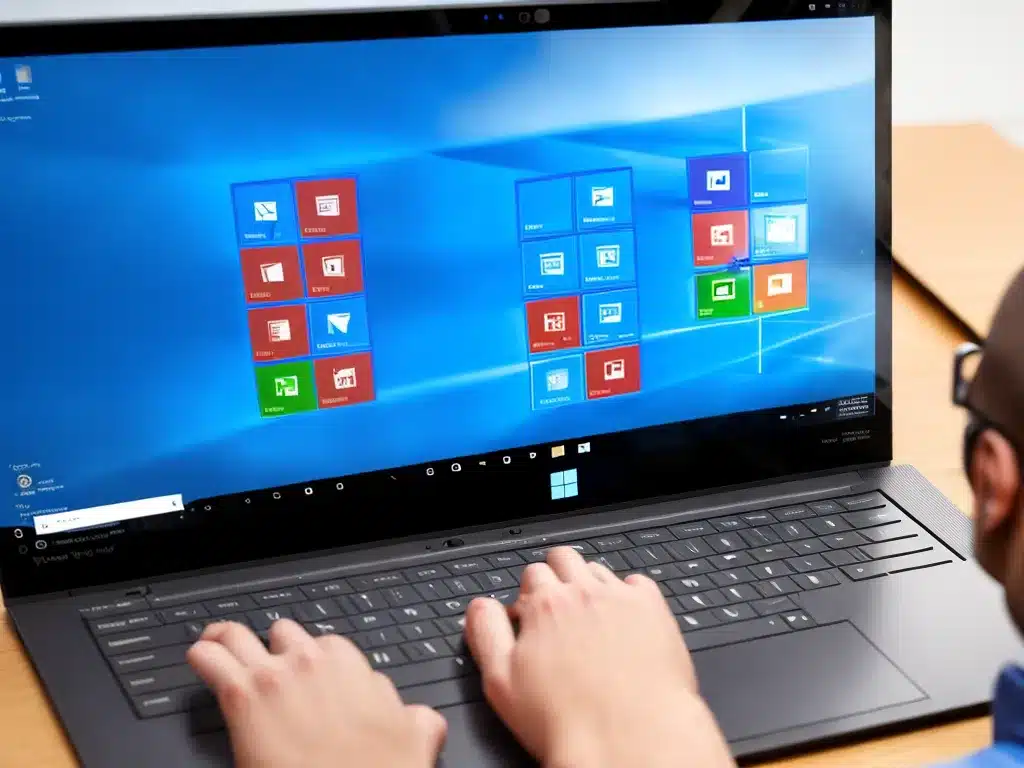
Introduction
I have been using Windows for over 10 years now. Recently, Microsoft released Windows 10 as the latest version of their operating system. As an avid Windows user, I am wondering if it is time for me to upgrade to Windows 10. In this article, I will examine the pros and cons of upgrading to Windows 10 to help me, and others in a similar position, determine if now is the right time to make the switch.
Pros of Upgrading to Windows 10
Here are some of the biggest pros that make me want to upgrade to Windows 10:
Improved Security
Windows 10 has enhanced security features compared to previous Windows versions. Some key improvements include:
- Windows Hello – Allows biometric authentication using fingerprint, face recognition or iris scan. Much more secure than passwords.
- Windows Defender – Built-in anti-malware software that helps protect against viruses and other threats.
- Secure Boot – Checks firmware during boot process for malware or unauthorized changes. Prevents bootkits.
- Device Guard – Locks down devices to only allow trusted apps to run. Prevents untrusted programs execution.
These security upgrades give me confidence my device and data will be better protected with Windows 10.
Faster Performance
Windows 10 is optimized to utilize modern hardware more efficiently. I should expect faster boot times, quicker app launches, and smoother multitasking compared to older versions. The improved performance will make daily use much more responsive.
Latest Features
As the newest version, Windows 10 introduces helpful new capabilities:
- Cortana – Personal digital assistant with voice commands and AI capabilities.
- Microsoft Edge – Faster, sleeker web browser to replace Internet Explorer.
- Windows Store – Curated app store with Universal Windows Platform (UWP) apps that work across devices.
- Continuum – Automatically adapts UI between tablet and desktop modes. Useful for 2-in-1 devices.
- Task View – Single view to switch between open apps and virtual desktops. Handy for multitasking.
These features help increase productivity and offer a more modern computing experience.
Long-Term Support
Microsoft promises to support Windows 10 with security updates and new features for the foreseeable future. Staying up-to-date provides stability, continuity, and peace of mind that my OS will be supported long-term.
Cons of Upgrading to Windows 10
However, there are also some downsides that give me pause:
Hardware Requirements
Windows 10 has steeper hardware requirements than previous versions. Older devices may suffer performance or compatibility issues if they don’t meet the minimum specs. Upgrading hardware can be expensive.
Software Compatibility
Some older software or peripherals may not work properly on Windows 10. I’ll have to check for compatibility issues to avoid potential problems. Replacing incompatible apps or devices leads to extra hassle and costs.
Interface Changes
Long-time Windows users will face a learning curve with Windows 10’s dramatic interface changes compared to Windows 7 or 8/8.1. It may take time to get comfortable with the new look and workflow.
Stability Issues
As a brand new OS, Windows 10 may still have lingering bugs and stability issues. Waiting for a few update cycles allows time for bugs to get addressed before adopting. Early adopters risks more crashes, flaws, and disruptions.
Privacy Concerns
Windows 10 collects a lot of usage data and has invasive default privacy settings. It may require tweaking settings to prevent Microsoft from gathering personal information I’d rather keep private.
Is It Time to Upgrade? Key Questions to Ask
When deciding if I should upgrade to Windows 10, I need to weigh the pros and cons carefully and assess several key factors:
- Is my current hardware compatible? Check my PC’s specs against the requirements.
- Are my essential apps and peripherals compatible? Verify with the vendor or testing.
- Am I comfortable learning a new interface? Assess technical proficiency and willingness to adapt.
- Are new features worth upgrading for? Evaluate which capabilities would improve or enable my usage.
- Can I wait out initial bugs/issues? Determine patience for potential early instability.
- Do I want to tweak privacy settings? Check if default data collection is acceptable.
Carefully considering these questions will determine if the benefits outweigh the downsides for my specific situation.
Conclusion
Upgrading to Windows 10 has compelling benefits but also some cautionary drawbacks to evaluate. I need to assess my personal hardware, software needs and preferences to decide if now is the optimal time to upgrade. While Windows 10 promises an improved security, performance and features, I also need to be ready to tackle potential compatibility issues, learning curves, bugs and privacy concerns. Weighing the pros against the cons and asking key questions makes it easy to determine the best course of action – whether that means upgrading immediately, waiting for more bug fixes, or keeping my existing system a bit longer.












